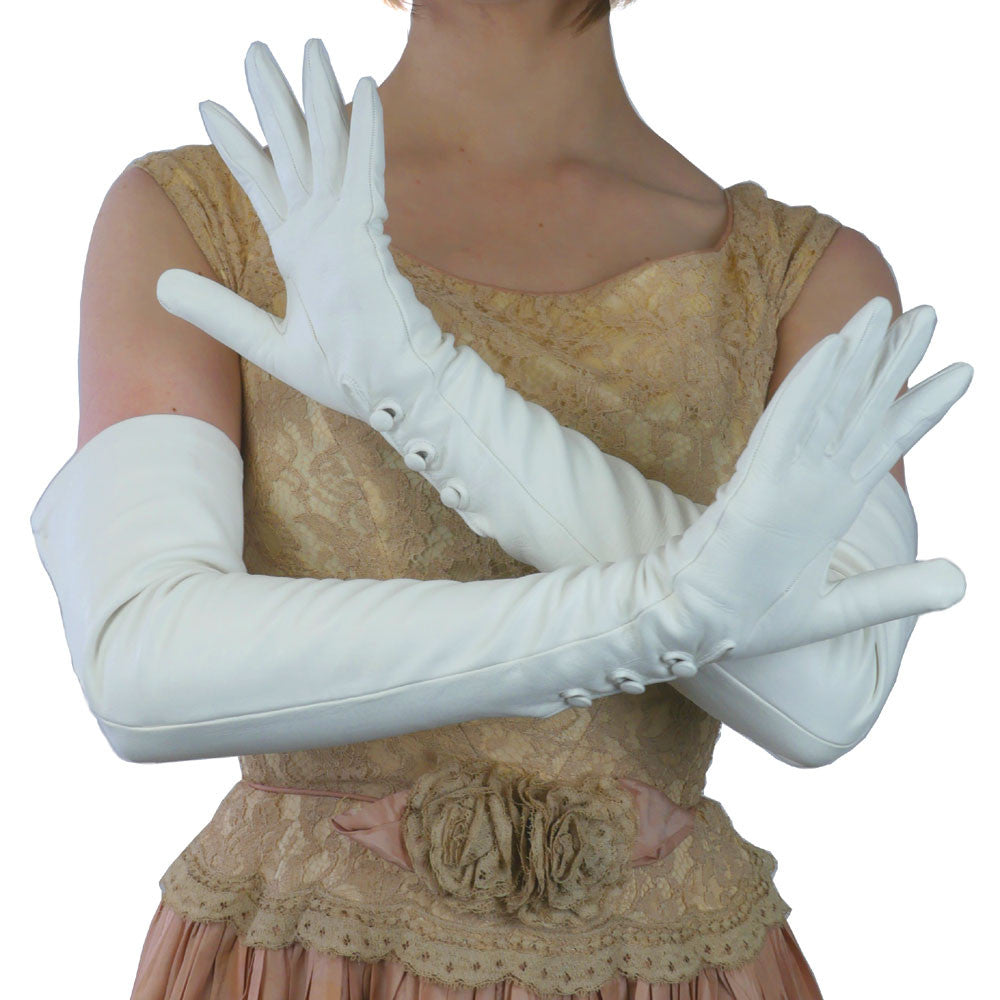The "opera glove", in the version we most commonly know it today, is a glove of between 19 and 23 inches in length, made of kidskin leather and colored white, ivory or black, with a wrist opening closing with three buttons or snap, and often with three lines stitched across the back of the hand. The longest opera gloves were designed so that the sleeves could wrinkle attractively as they wrapped their wearer's arms.
While gloves have been worn for nearly three thousand years, the garment we know as the opera glove seems to have first evolved in the late 16th and early 17th centuries. Queen Elizabeth I of England is reported as wearing an 18-inch-long pair of white leather gauntlets, with two inches of gold fringe, at a ceremony at Oxford in 1566.
Kidskin is an extremely soft, smooth, thin type of leather, made from the skins of milk-fed baby goats (kids). These kids are carefully raised so that they do not eat herbiage (which will change the texture of the skin in undesirable ways), or get bruised or scratched, so that their skins remain perfect and smooth. Kid leather is used for fine-grained, glace-finished (that is, grain finishing, a process in which a smooth, shiny finish is made on the topside of the skin by soft buffing or polishing on plush wheels) gloves, and kid gloves are often dyed so that the inside of the glove remains white. The traditional color for the kid glove - the default color, as it were - is white or some other related shade like ivory or taupe, and this color was and is especially favored for formal wear, but other colors, such as black, red, blue and brown have also found favor.
It is these baby-soft kidskin leathers that Solo Classe Italian Leather Debutante, Wedding and Opera Gloves are composed.
Pamper yourself with a pair today. You deserve it.

